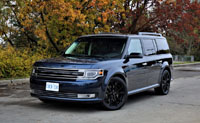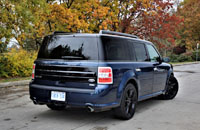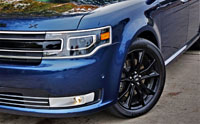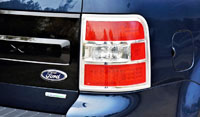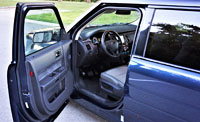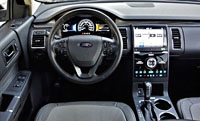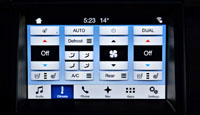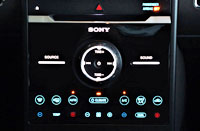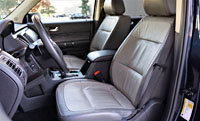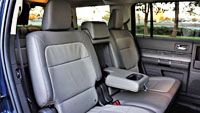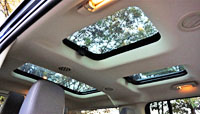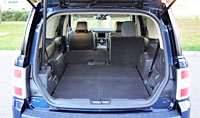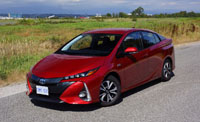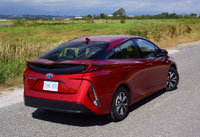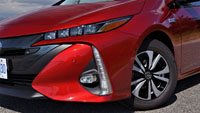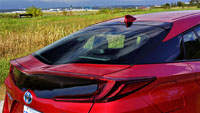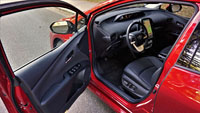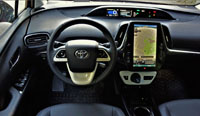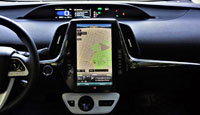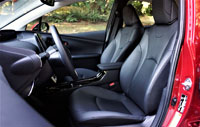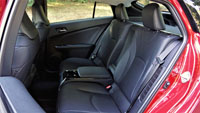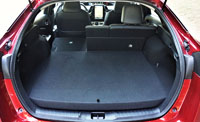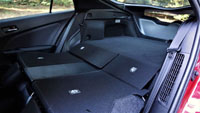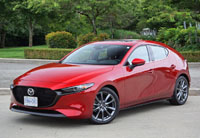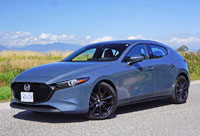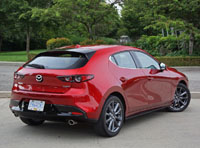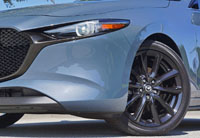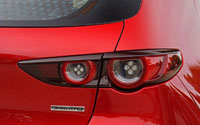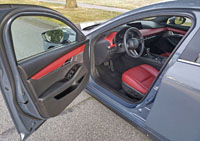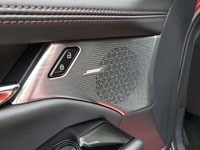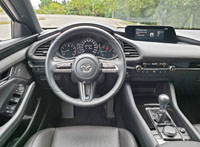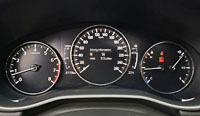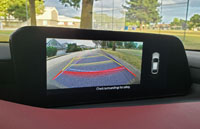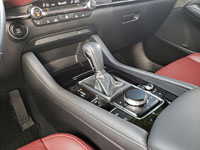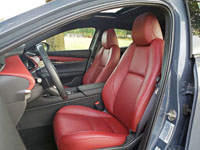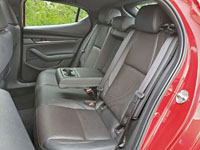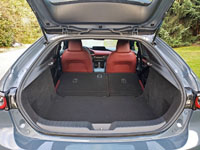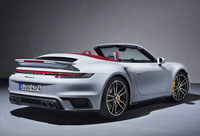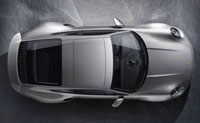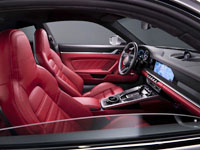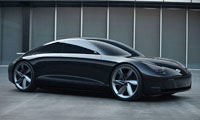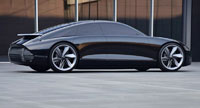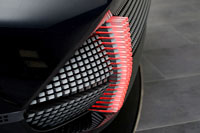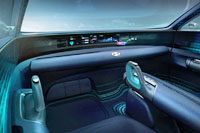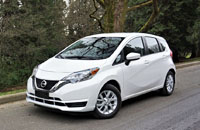
Does the idea of purchasing an inexpensive, economical yet very comfortable, roomy and practical hatchback at zero-percent financing sound like a good idea right now? If so, I recommend taking a closer look at the new 2019 Versa Note.
Of course, a 2019 model is hardly “new” this far into 2020, but it nevertheless is a new car that’s never been licensed and therefore qualifies for new car financing and leasing rates, plus it comes with a full warranty.
As it is there are too many Versa Notes still available on Nissan Canada’s dealer lots, so the automaker has created an incentive program to sell them off as quickly as possible. This benefits you of course, so it might be a really good idea to find out if this little car suits your wants and needs, because the price is right.
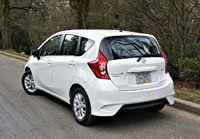
The Versa Note was discontinued last year, but cancelling a car doesn’t mean it’s not worth buying. In actual fact, Nissan’s second-smallest model is an excellent city car that’s also better than most on the highway, plus it offers more passenger and cargo room than the majority of its subcompact rivals. It just happens to be past its stale date, having already been replaced by two trendier subcompact crossover sport utilities dubbed Kicks and Qashqai.
Those wanting Nissan’s latest styling will be happy to find out the Versa Note received an update for its 2017 model year, incorporating most of the brand’s latest frontal styling cues for much more attractive styling than the previous incarnation. The Note doesn’t include a floating roof design, like the Leaf EV and most other new Nissan models, while its taillights are also unique to the model, but its hind end is nevertheless attractive and overall shape easy on the eyes.
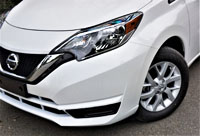
At least as important, the Versa Note provides a taller driver and passengers a lot of headroom due to its overall height, making the car feel more like a small SUV than a subcompact city car. The seats are particularly comfortable as well, due to memory foam that truly cushions and supports one’s backside, plus the upholstery in my top-line SV model was very good looking, with an attractive blue fleck pattern on black fabric. The driver’s seat even includes a comfortable minivan-style fold-down armrest on its right side.
Additional niceties include a leather-clad steering wheel rim, stylish satin-silver spokes, and a tilt steering column. Nissan adorns each dash vent with the same silver surface treatment, not to mention both edges of the centre stack and the entire shift lever surround panel.
Also impressive, my tester’s upgraded instrument cluster features backlit dials and really attractive digital displays. It’s so stylish that it makes the centre touchscreen seem dowdy by comparison. Truth be told, the main infotainment display is graphically challenged, particularly when put beside some of Nissan’s more recently improved models, but it more than does the job and is user-friendly enough, while at 7.0 inches it’s reasonably bit for this class, which provides good rear visibility through the reverse camera.
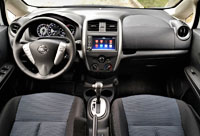
While there isn’t much to criticize the Versa Note about, no telescoping steering means it might not fit your body ideally. I have longer legs than torso and therefore had to crank the seatback farther forward than I normally would so as not crowd my legs and feet around the pedals, which worked but would’ve caused me to think twice about purchasing one.
On a much better note, those in back will find a lot more legroom than most subcompact contemporaries (the Versa Note is actually classified as a mid-size model), this thanks to a very long wheelbase, which makes the Versa Note perfect for taller than average folks. Rear passengers will find a comfortable folding armrest in the centre position, with the usual twin cupholders integrated within, another duo of cupholders can be found on the backside of the front console. Lastly, a magazine pouch is included on the backside of the front passenger’s seat.
The Note is also great for hauling loads of gear. It gets the usual 60/40 split-folding rear seatbacks, but its innovative Divide-N-Hide adjustable cargo floor doesn’t follow the subcompact herd. It can be moved up or down as required, meaning you can stow taller items in the latter position or otherwise awkward cargo on a flat load floor when slotted into the former. You can fit up to 532 litres (18.8 cubic feet) behind the rear seats, incidentally, or 1,084 litres (38.3 cu ft) of what-have-you by lowering both rear seatbacks. That’s very good, by the way.

For its price range the spacious Versa Note gets its fair share of equipment, but like all new cars this depends on which trim is chosen. Of note, the sportiest SR mode was discontinued for 2019 and the more luxurious SL was dropped for 2018, but Nissan brought in a $700 SV Special Edition package for this final year, which includes a set of fog lights, a rear rooftop spoiler, and Special Edition badges on the outside, plus proximity keyless entry for access to the cabin along with pushbutton start/stop to get things going once strapped inside, while other goodies include an enhanced NissanConnect infotainment system featuring Apple CarPlay and Android Auto smartphone integration, plus satellite radio.
A quick look at my test model’s photos will show no fog lights or rear spoiler, so I won’t be directly reporting on the 2019 SV Special Edition, but its 15-inch alloys make it clear that this isn’t a base model either (the entry-level Note S gets 15-inch steel wheels with covers). The regular SV starts at $18,398 and includes the aforementioned gauge cluster upgrade as well as the leather-clad steering wheel also noted before, along with powered door locks with remote access, power windows, a continuously variable automatic transmission (CVT), cruise control, a six-way manual driver’s seat (featuring height adjustment), heated front seats, a cargo cover, plus more.
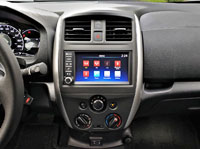
Base S trim, which starts at $14,698 plus freight and fees, is the only 2019 Versa Note trim that can be had with a five-speed manual gearbox (you could get a manual with the SV for the 2018 model year), but base buyers should know the CVT can be added for a mere $1,300 extra. Transmission aside, base S trim also gets a set of powered and heated exterior mirrors, a four-way manual driver’s seat, air conditioning, a less comprehensively equipped 7.0-inch infotainment system, Bluetooth hands-free with streaming audio, phone and audio switchgear on the steering wheel, a hands-free text message assistant, Siri Eyes Free, auxiliary and USB ports, four-speaker audio, etcetera.
All the usual active and passive safety gear is included as well, of course, but those wanting the newest advanced driver assistance systems like collision warning with automatic emergency braking, blindspot monitoring with lane departure warning, or active cruise control with Nissan’s semi-autonomous ProPILOT assist self-driving tech had better choose one of the automaker’s more recently introduced subcompact crossovers.
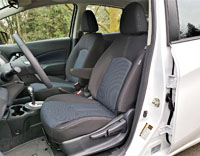
Let’s be nice and call the Versa Note traditional instead of antiquated, because at the end of the day it goes about its business very well and therefore delivers what many consumers require from a daily commuter. While hardly as technologically advanced or trendy in design, the Note nevertheless provides comfortable seating and a very good ride for its entry-level price range, plus decent get-up-and-go when pushing off from standstill or while passing, plus its CVT is ultra smooth.
The Versa Note uses the same 1.6-litre four-cylinder as the smaller Micra, making an identical 109 horsepower and 107 lb-ft of torque. That means the bigger, heftier model doesn’t feel quite as quick off the line. The Note’s purpose is more about fuel economy anyway, and with that in mind it manages a claimed five-cycle rating of 8.6 L/100km city, 6.6 highway and 7.7 combined with its manual, or 7.6 city, 6.2 highway and 7.0 combined with the CVT. That doesn’t seem all that great until comparing it to the Micra that has the same 1,092-kilogram curb weight when fully loaded as the Note’s base trim (the Note SV as-tested hits the scales at 1,124 kg), but still only can manage 7.9 L/100km combined with its manual and 8.0 combined with its four-speed auto. I think the similarly roomy Honda Fit is a better comparison, the innovative subcompact capable of 7.0 L/100km combined with its six-speed manual or just 6.5 with its most economical CVT.
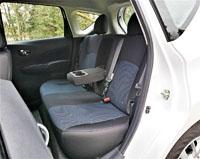
As for handling, the Micra has the Versa Note beat any day of the week. In fact, Nissan Canada uses the Micra in a spec racing series, something that would be laughable in the more comfort-oriented Note. The larger hatchback is particularly tall as noted, so therefore its high centre of gravity works counter to performance when attempting to take corners quickly, but then again if you don’t mind a bit of body roll it manages just fine. Better yet is the Versa’s roomy comfort, whether tooling through town or hustling down a four-lane freeway where it’s long wheelbase aids high-speed stability, it’s a good choice.
If you think this little Nissan might suit your lifestyle and budget and therefore would like to take advantage of the zero-percent financing mentioned before, I’d recommend checking out our 2019 Nissan Versa Note Canada Prices page where you can browse through all trims and packages in detail, plus quickly scan colour choices within each trim, while also searching for the latest manufacturer rebates that could save you even more.
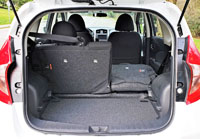
Better yet, a CarCostCanada membership provides access to dealer invoice pricing that could save you thousands when making a purchase. Everything just mentioned can be accessed at the CarCostCanada website or via a new downloadable CarCostCanada app, so make sure to check your phone’s app store. This said, ahead of calling your local Nissan retailer to purchase a new Versa Note, or connecting with them online (and it’s a good idea to deal with them remotely right now), be sure to do your homework here at CarCostCanada so you can claim the best possible deal.
Story credit: Trevor Hofmann
Photo credits: Karen Tuggay

